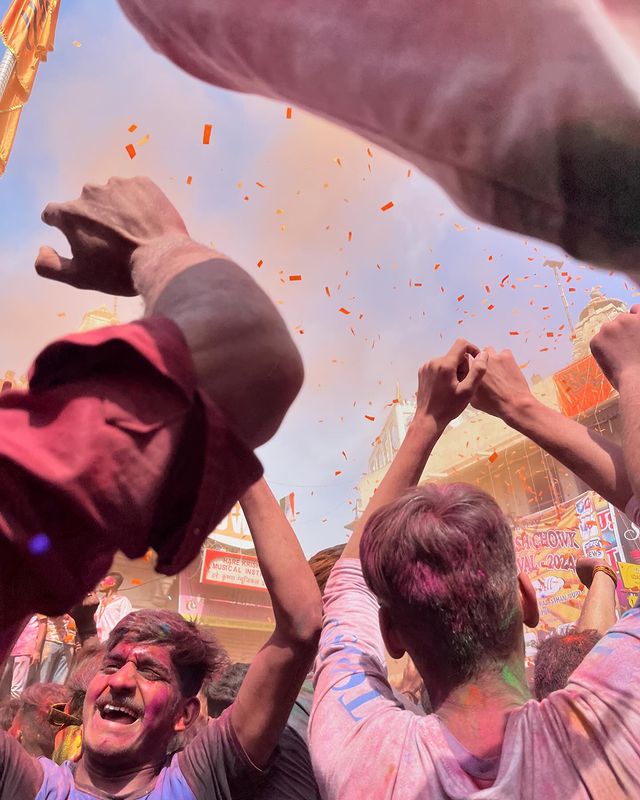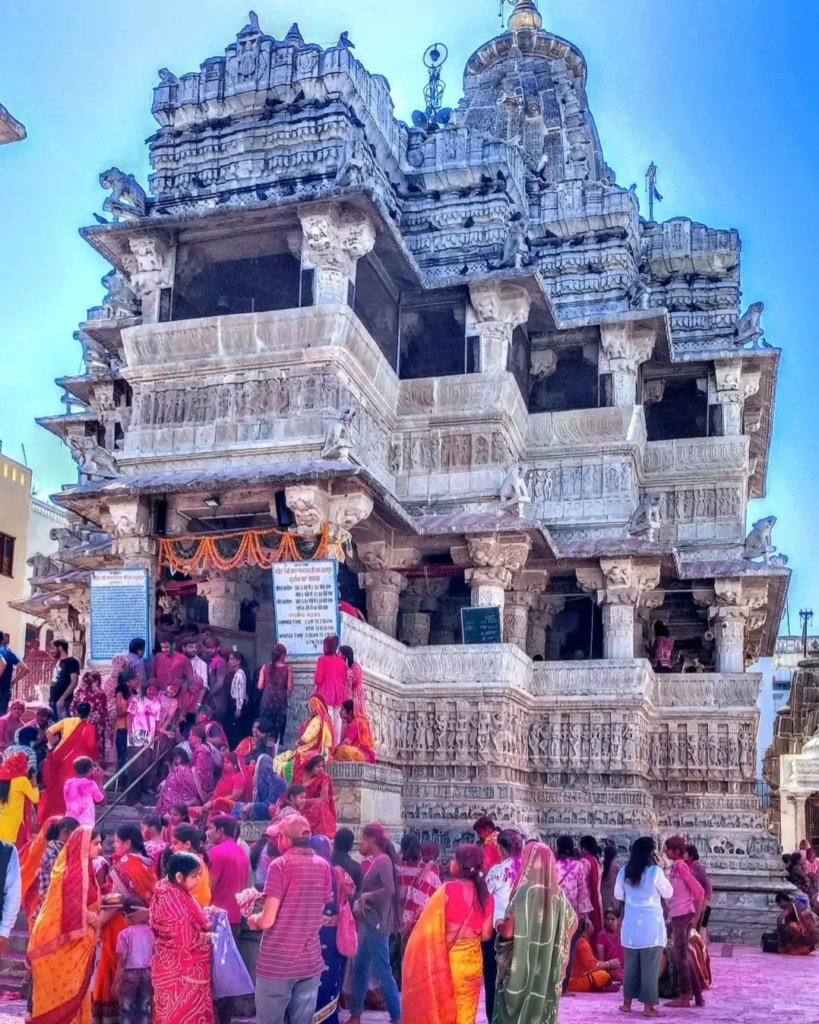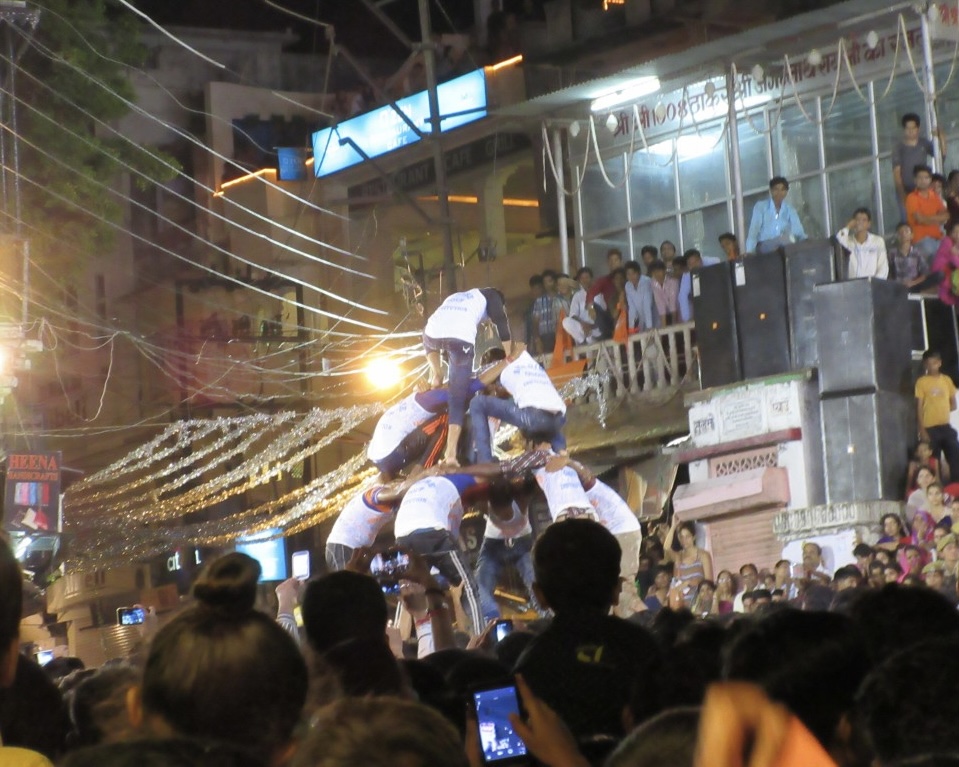


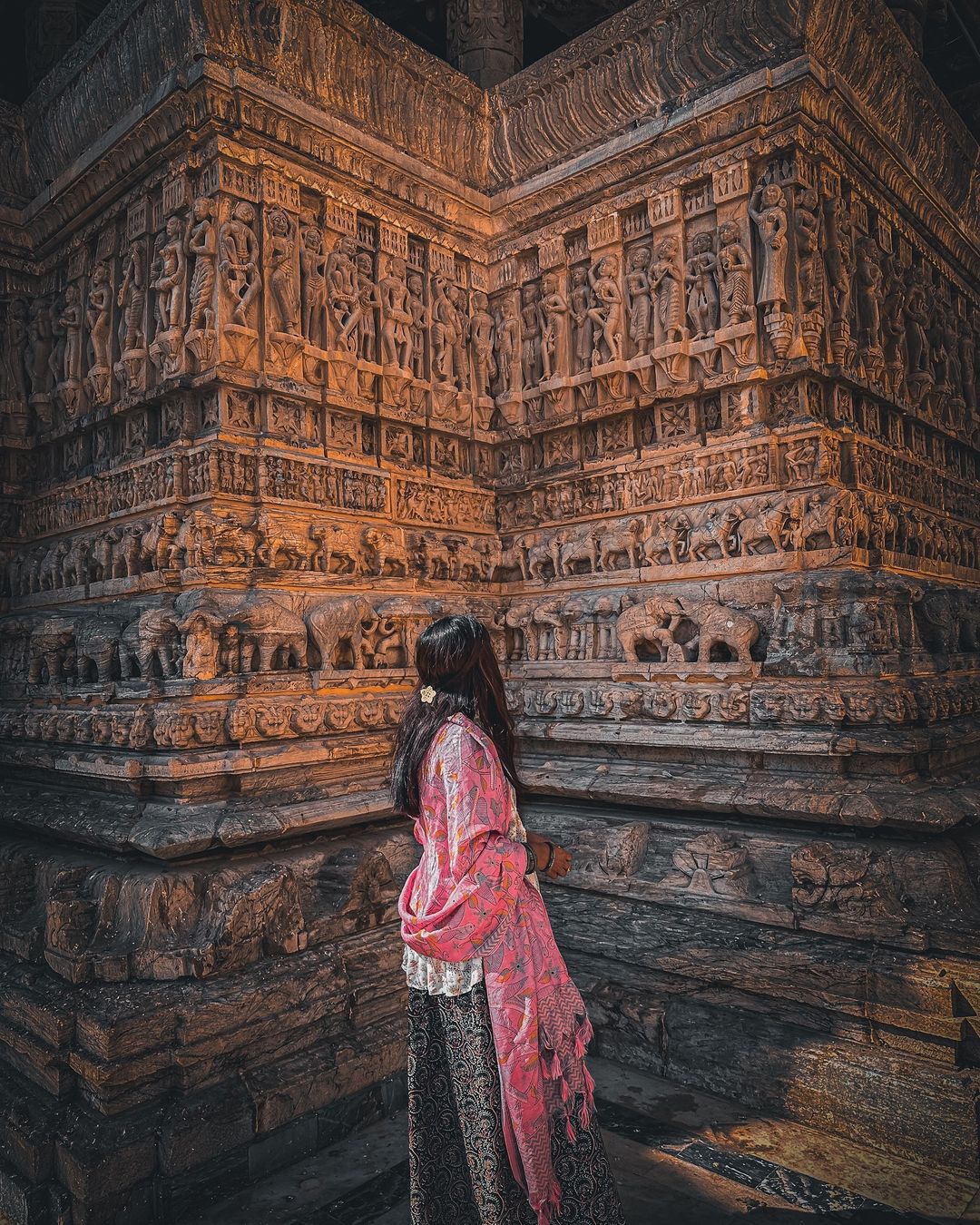
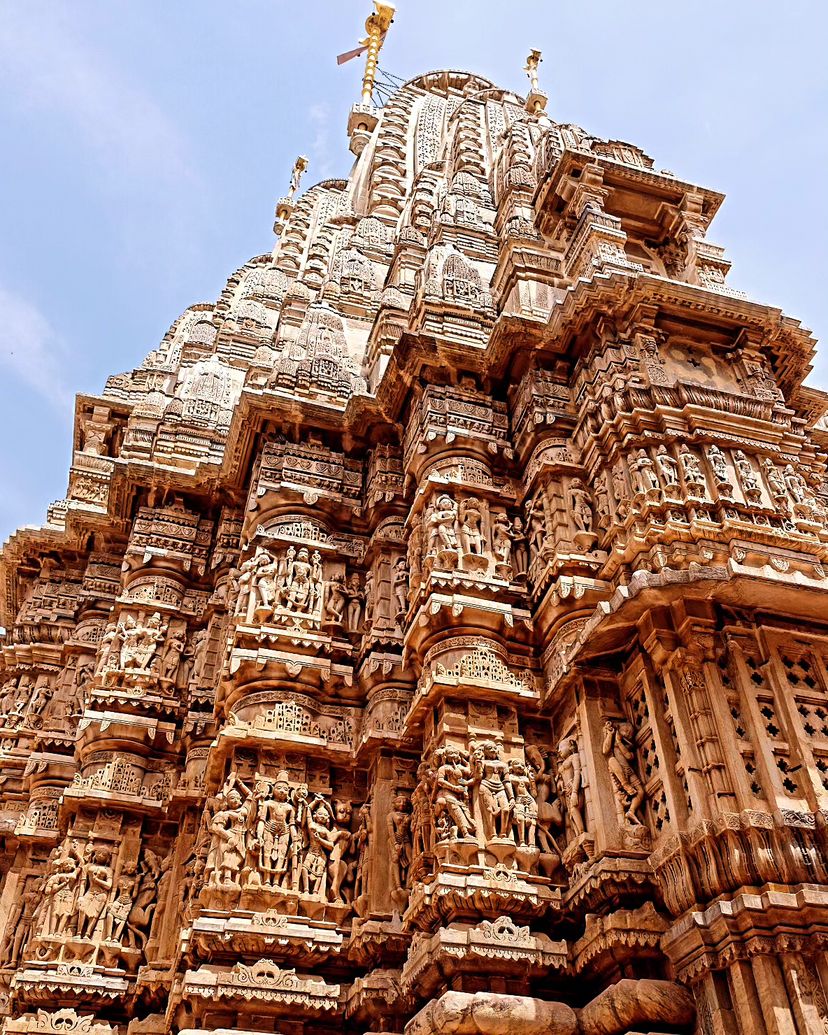
History Of jagdish temple

- Jagdish Temple, built in 1651, is one of the most renowned Hindu temples in Udaipur, Rajasthan, India.
- It was constructed by Maharana Jagat Singh, who ruled Udaipur during the reign of Maharana Pratap.
- The Shri Jagdish Temple is dedicated to Lord Vishnu, also known as Lord Laxmi Narayan, and is revered as the foremost temple in the entire city of Udaipur.
Architecture of Jagdish temple

- Two enormous elephants made of stone welcome you at the entrance to the corridor. What you will see next is a stone piece engraved with inscriptions that refer to Maharaja Jagat Singh
- The temple, located in Udaipur, Rajasthan, India, boasts stunning architectural features characteristic of the Māru-Gurjara style, a blend of Rajput and Mughal influences.
- the temple steeple is 79 feet high
- it has 32 steps
- A marble pathway leads you to the central sanctuary, where you’ll encounter a metallic depiction of Garuda, embodying both human and falcon, stationed as if protecting the threshold of Lord Vishnu.
- The main altar holds a four-sided statue of Lord Vishnu, carved from a single dark stone. Along the way to Lord Jagdish’s shrine, there are four small altars dedicated to Lord Ganesha, the sun god, the goddess Shakti, and Lord Shiva. Inside the altars, there’s a peaceful and calm atmosphere
- The temple’s interior is a symphony of vibrant colors, with painted ceilings, pillars, and walls adorned with rich frescoes and intricate artwork.
spiritual practices at Jagdish Temple
 The spiritual practices at Jagdish Temple revolve around devotion, prayer, and rituals aimed at connecting worshippers with the divine. Devotees visit the temple to offer their reverence and seek blessings from Lord Jagannath, the presiding deity.
The spiritual practices at Jagdish Temple revolve around devotion, prayer, and rituals aimed at connecting worshippers with the divine. Devotees visit the temple to offer their reverence and seek blessings from Lord Jagannath, the presiding deity.- One of the primary spiritual practices at the temple is darshan, which involves viewing the deity and receiving their divine gaze.
- Another important aspect of spiritual practice at Jagdish Temple is participating in aarti ceremonies. Aarti is a ritual in which lamps are lit and waved in front of the deity, accompanied by prayers and devotional songs. The aarti ceremony is performed multiple times a day
- Throughout the year, the temple hosts various festivals and religious celebrations, during which devotees gather to participate in special rituals, processions, and cultural events. These festivals offer devotees an opportunity to deepen their spiritual connection and celebrate the divine presence of Lord Jagannath.
Festival celebration at Jagdish temple
Holi celebration at Jagdish temple
Holi at Jagdish Temple is a vibrant and joyous celebration that marks the arrival of spring and the victory of good over evil. The festival is celebrated with great enthusiasm and fervor by devotees and locals alike.
The festivities typically begin with the lighting of bonfires on the eve of Holi, known as Holika Dahan. This ritual symbolizes the triumph of virtue over vice and commemorates the legend of Prahlad and Holika. People gather around the bonfires, sing devotional songs, and perform rituals to ward off evil spirits.
On the day of Holi, the atmosphere at Jagdish Temple is filled with color and excitement. Devotees gather to offer prayers and seek blessings from Lord Jagannath. Throughout the day, people joyfully splash colored powders and water on each other, symbolizing unity, love, and the victory of good over evil.
Music, dance, and festive fervor fill the air as people of all ages come together to celebrate. Traditional sweets and delicacies are shared among friends and family, adding to the festive spirit.
The celebration of Holi at Jagdish Temple is not only a time for revelry but also a time for spiritual reflection and renewal. It brings people together in harmony and strengthens the sense of community and brotherhood among devotees. Overall, Holi at Jagdish Temple is a celebration of life, love, and the eternal triumph of goodness.
janmashtami at Jagdish temple Udaipur
Janmashtami at Jagdish Temple in Udaipur is a vibrant celebration that honors the birth of Lord Krishna. The temple, dedicated to Lord Vishnu, comes alive with elaborate decorations, devotional music, and enthusiastic devotees. Special prayers and rituals are conducted throughout the day, culminating in midnight when Lord Krishna is believed to have been born. The temple is adorned with flowers, lights, and colorful decorations, creating a festive atmosphere. Devotees offer prayers, sing bhajans (devotional songs), and participate in traditional dances to celebrate the occasion. The atmosphere is filled with joy and spirituality, attracting visitors from all over to witness and partake in the festivities.
Matki Phod, also known as Dahi Handi, is a popular tradition observed during Janmashtami in many parts of India, including Maharashtra and Gujarat. It reenacts the playful antics of Lord Krishna, who was known for stealing butter and curd as a child.
During Matki Phod, a clay pot (matki) filled with buttermilk or yogurt is suspended at a height. Participants form human pyramids, with the aim of breaking the pot by reaching it and breaking it open. This activity symbolizes Krishna’s mischievous nature as a child, as well as his ability to overcome challenges through teamwork and determination.



